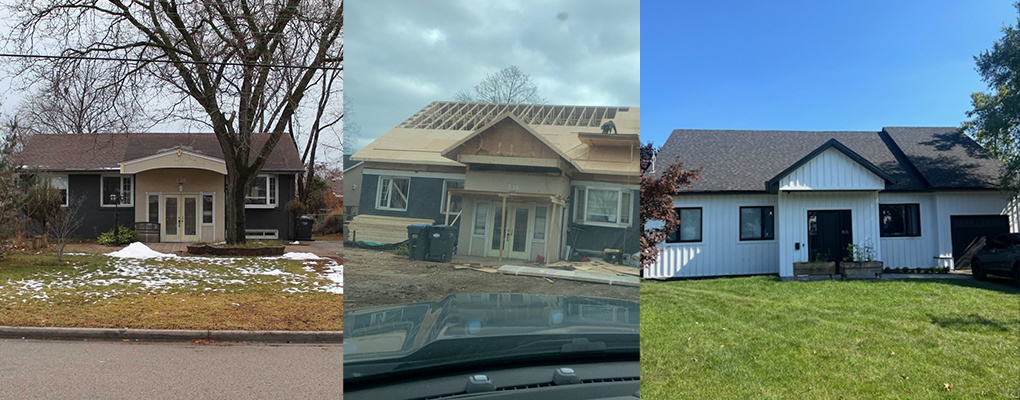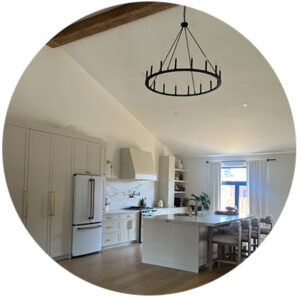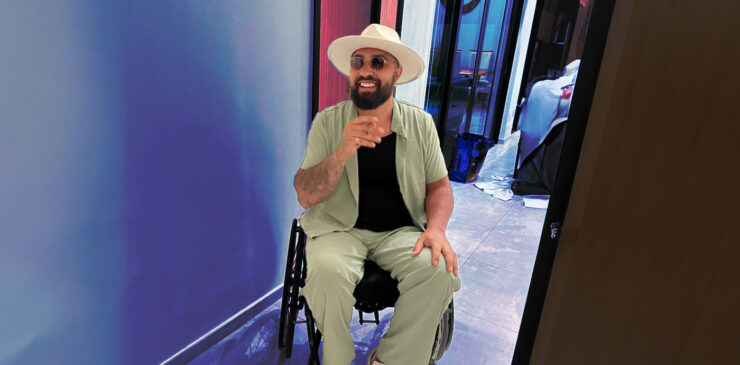Tony Sattari was born into a family of five, with parents who immigrated to Canada from Iran. Always drawn to working with his hands, he opted for a career in construction, where he excelled at his craft. Five years ago, things took a turn with an ATV accident in which he sustained a spinal cord injury – the line of work Tony had grown to love was no longer a viable option. Even more concerning was that he needed an accessible place to live and did not know where to begin.
High price tags and teamwork
When Tony began connecting with builders, it became apparent that they were attempting to take advantage of his accessibility needs. “I was using a chair now, and they were banking on the hope that I wasn’t aware of the cost of things, so they would throw out high numbers like thirty thousand dollars to upgrade a shower,” recalls Tony. “I knew the real costs from actually working in the field, and it would have been half of that or even less.”
After numerous high quotes for accessible features, Tony decided to take matters into his own hands, team up with plumbers, electricians, and builders from his network, and build his home from scratch. “I understand the needs of a wheelchair user now, so who better to plan it and build it than me?” says Tony. And with impressive teamwork at play, his house was built for an astonishing quarter of the original price he was quoted.
 I understand the needs of a wheelchair user now, so who better to plan it and build it than me?
I understand the needs of a wheelchair user now, so who better to plan it and build it than me?
The importance of style
For Tony, compromising his sense of style was out of the question. He was used to seeing accessible designs that made one feel like they were in a permanent hospital setting. “We were very intentional when we were designing my home and made sure that even the accessible features weren’t so obvious but still worked for my needs. It is very modern and esthetically pleasing,” says Tony, “Nothing is obviously different about it than any other home, yet it still has the features a wheelchair user would require. My kitchen looks ordinary, but the cupboards can be brought down.” He also has an elevator in the garage and grab bars in the bathroom that blend well into the decor theme.

Despite having the knowledge, skills and means to build his dream home, the process did not come without its share of challenges. “As a blue-collar guy, it was hard to acknowledge I wouldn’t be involved as much in the labour part of things – very simple tasks I was used to doing myself, I now had to explain how to do to other workers,” he shares. It was also a creative challenge to map things out in an accessible way that was not too noticeable.\
Although Tony initially consulted with an Occupational Therapist who made recommendations, he followed his intuition and first-hand experience with navigating life with a disability – this gave him more leverage and creativity.
Breaking the mould of how things are done
 From Tony’s perspective, there is too much emphasis on condo living for people with disabilities, specifically those who are wheelchair users. “On one hand, it’s helpful because there is already an elevator built in, but if anything happens to the elevators, you are stuck in your unit. And not everyone wants to live in a condo,” he shares. He advises people transitioning to living with a disability to try living somewhere for a while and discover what works for them. “Test things out first,” he says. “Shop around. You don’t have to go for the first place.”
From Tony’s perspective, there is too much emphasis on condo living for people with disabilities, specifically those who are wheelchair users. “On one hand, it’s helpful because there is already an elevator built in, but if anything happens to the elevators, you are stuck in your unit. And not everyone wants to live in a condo,” he shares. He advises people transitioning to living with a disability to try living somewhere for a while and discover what works for them. “Test things out first,” he says. “Shop around. You don’t have to go for the first place.”
As for his advice to builders, Tony emphasizes the importance of creating more homes that are built with accessibility in mind. “The majority of people seem able-bodied, but things can change fast, and it is obvious there is a major shortage of accessible homes,” says Tony.
For Tony, the process of building his house is a source of pride that greatly helped him in his transition to living with a disability. “It’s a huge source of pride because they were my ideas, and I watched them become real,” he shares.
He reflects on his time working in the industry before his injury and shares the joy he felt when giving customers their dream homes, from modern kitchens to spa-style bathrooms. He would like to turn this passion into working with others with SCI and helping them envision and create their dream homes.






